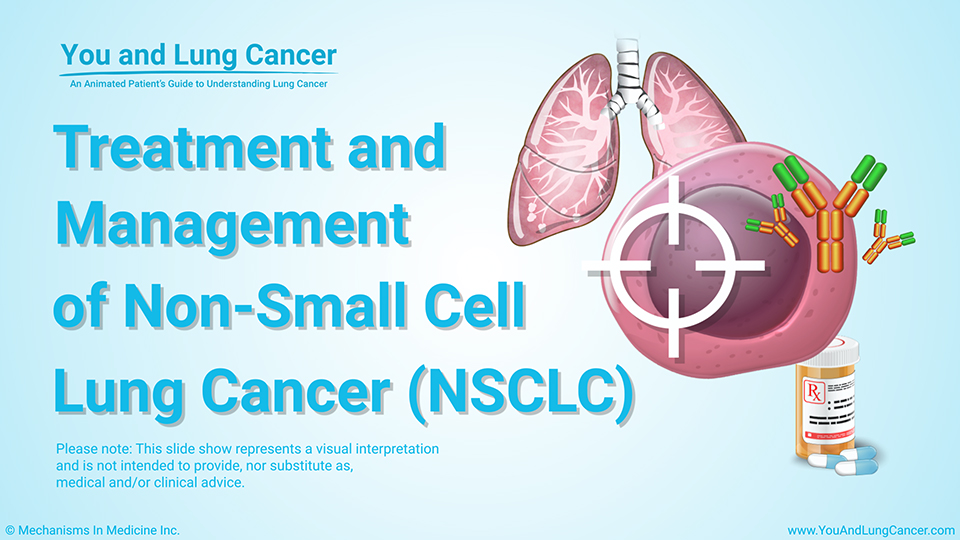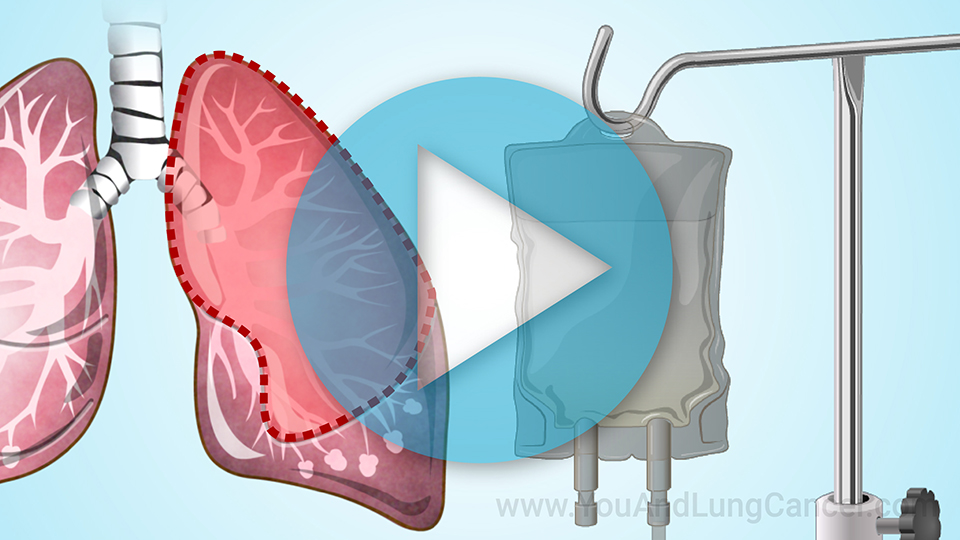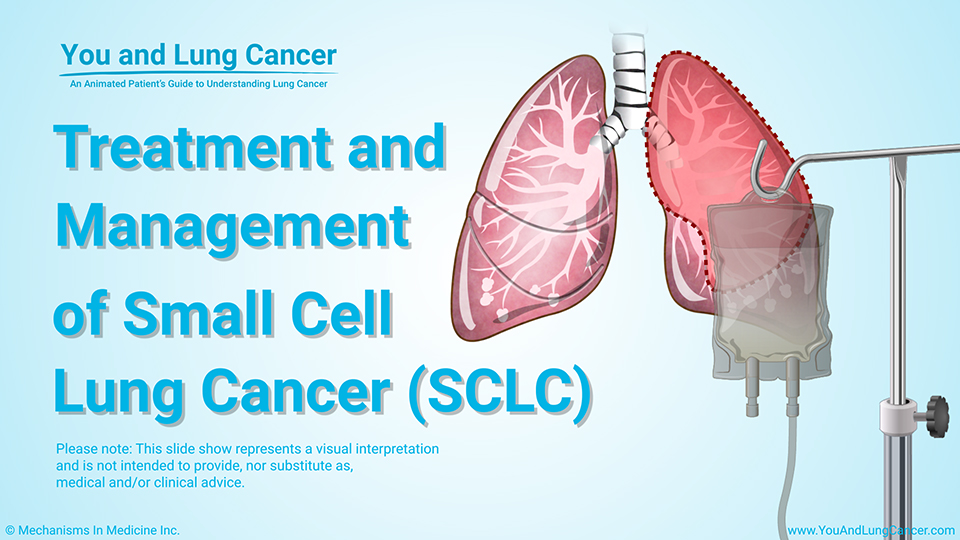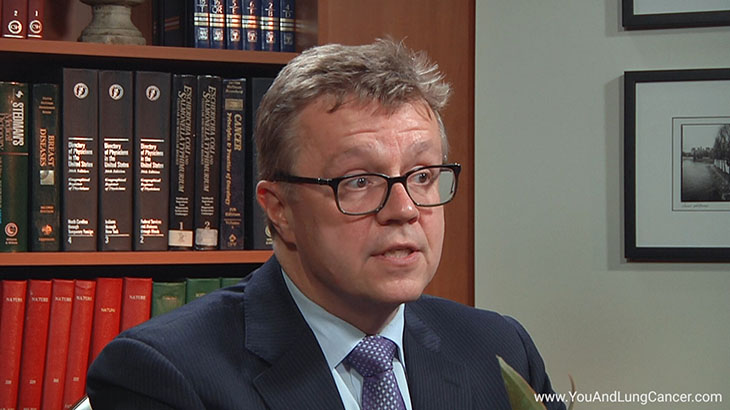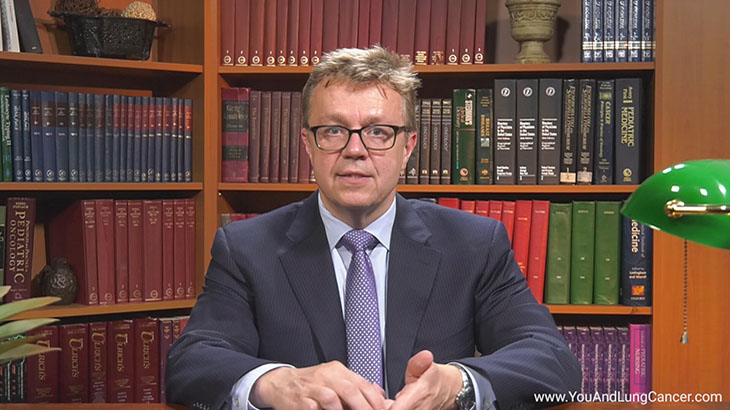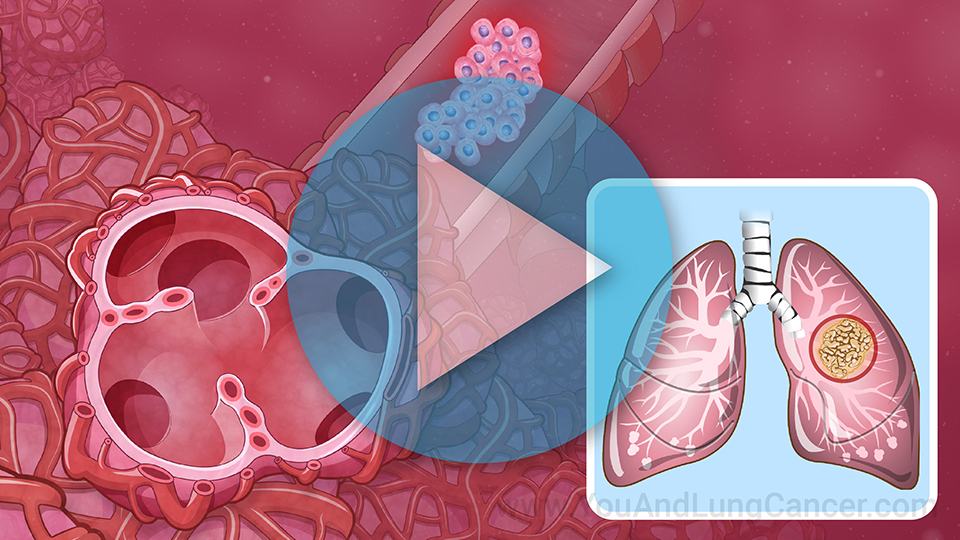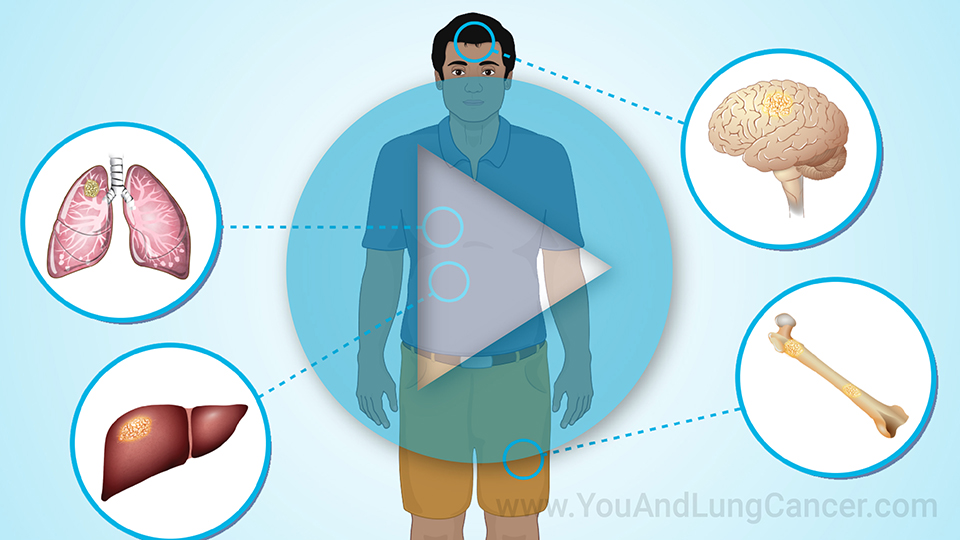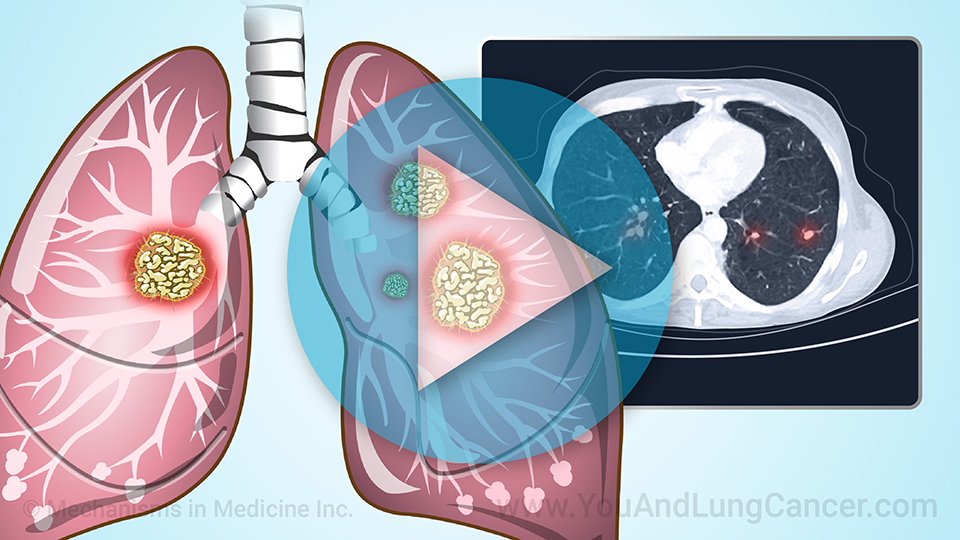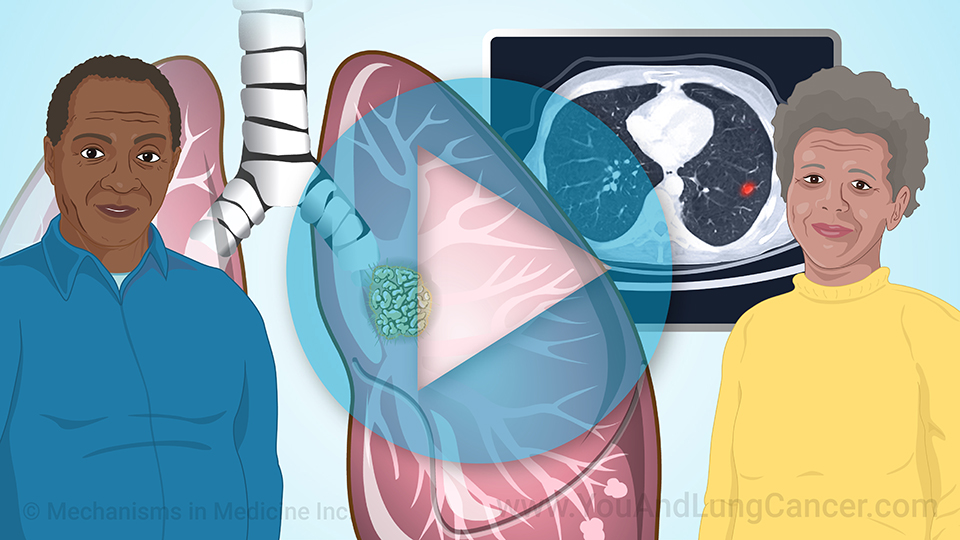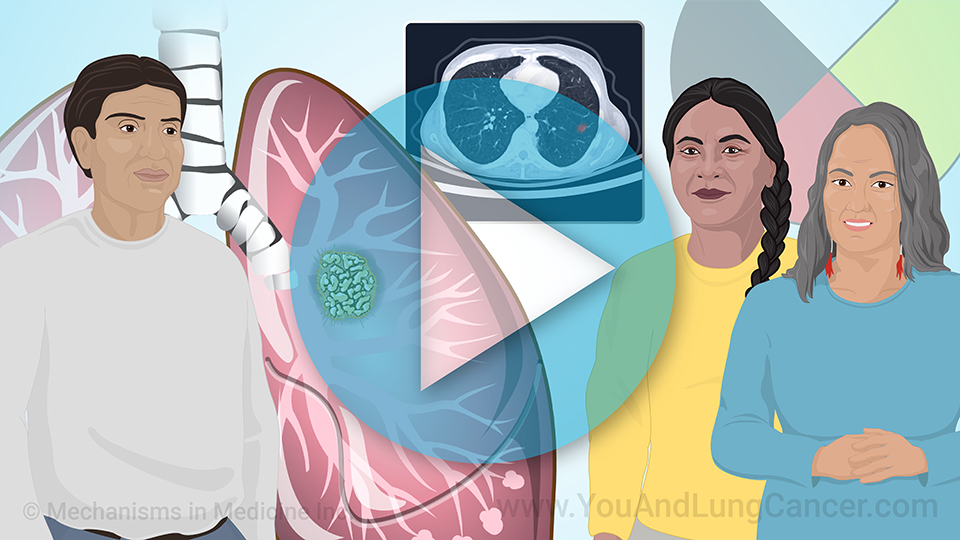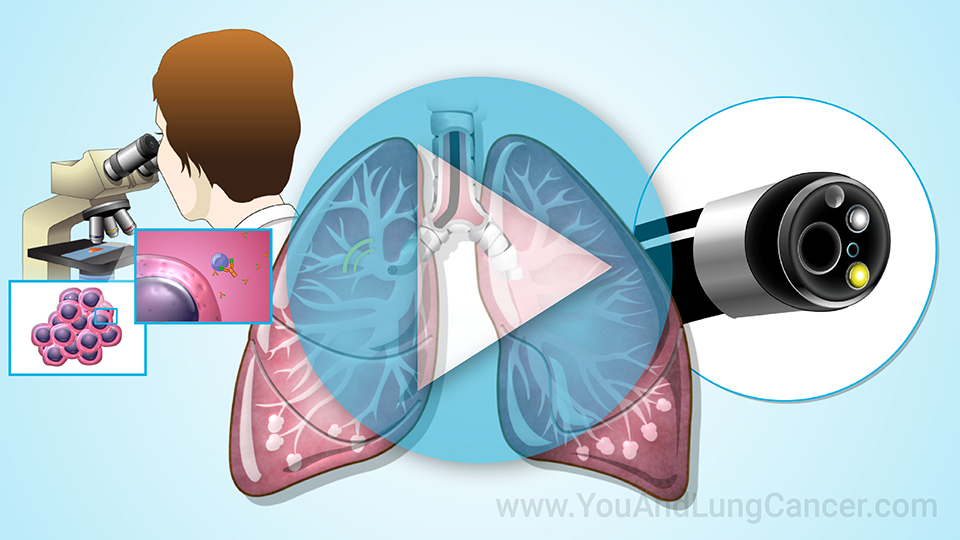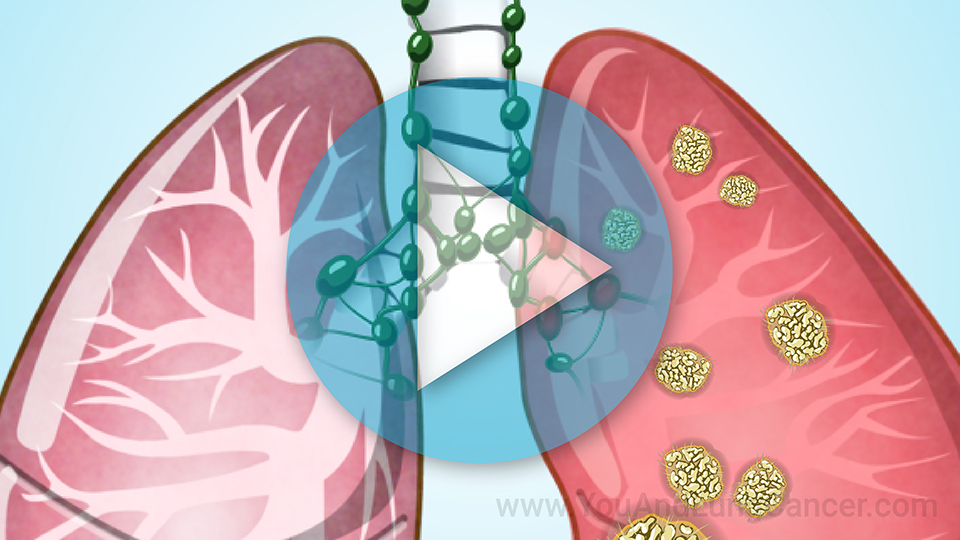Treatment and Management of Small Cell Lung Cancer (SCLC)
*Please note: This slide show represents a visual interpretation and is not intended to provide, nor substitute as, medical and/or clinical advice.
How is SCLC treated?
Most patients with SCLC receive chemotherapy (or "chemo" for short) and radiation therapy.
Other forms of care include:
-
Supportive care to ease pain and discomfort; prevent and treat side effects; help you deal with stress and anxiety; and to help you stop smoking; and
- Palliative care is also important to ease symptoms and improve quality of life.
When is surgery used to treat patients with SCLC?
For patients with limited stage SCLC, surgery is a possible option if:
- The disease is a single small tumor; and
- There are no signs of cancer in the lymph or elsewhere; and
- The patient is healthy enough for surgery.
However, less than 1 in 20 patients with SCLC can be treated with surgery.
Types of surgery used to treat patients with SCLC
If surgery is possible, depending on how far the cancer has spread, the surgeon might remove:
- An entire lobe (called a lobectomy); or
- The whole lung (called a pneumonectomy).
The surgeon must also remove nearby lymph nodes to check for cancer.
Surgery is not an option for limited stage SCLC when...
Unfortunately surgery can’t be used for most patients with limited stage SCLC because most of the time:
- The tumor is too large; or
- The tumor is in a place where it can’t be safely removed; or
- The cancer has spread to nearby lymph nodes or other places in the lung.
Other treatment options for limited stage SCLC
Patients in good health are usually treated with chemo plus radiation to the chest.
Less healthy patients get chemo by itself, although sometimes, the chemo is followed by radiation to the chest.
Another option would be a clinical trial for a new treatment.
Treatment options for extensive stage SCLC
For extensive stage SCLC patients, chemo is used to shrink the cancer and ease symptoms. If the cancer shrinks, radiation to the chest might help control the cancer. Radiation to the brain can also lower the risk of cancer spreading there.
Patients not healthy enough for regular chemo receive lower doses of chemo or palliative/supportive care alone.
Clinical trials of new treatments may also be another option.
Potential side effects of SCLC treatments
Treatments for SCLC can cause side effects such as hair loss, poor appetite, nausea, vomiting, diarrhea, and increased chance of infection. Although not every patient gets side effects, your doctor or nurse will teach you how to prevent and manage them.
Will these treatments increase my survival?
While some treatments might make you feel better – for example by easing pain or making it easier to breathe – other treatments may help you live longer.
The benefits of joining a clinical trial
If you choose to join a clinical trial for small cell lung cancer, know that:
- You will receive the best standard treatment available for your condition;
- You may also get access to a new treatment that is not available outside of the clinical trial;
- You might also benefit from the extra care and attention provided by the clinical trial staff; and
-
You will help contribute towards advancing lung cancer treatment for everyone.
This slide show explains how most patients with small cell lung cancer are treated. Most patients receive chemotherapy (or "chemo" for short) and radiation therapy. There are also supportive treatments to ease pain and discomfort; prevent and treat side effects; help you deal with stress and anxiety; and if you have not already done so, to help you stop smoking. Palliative treatments also exist to ease symptoms and improve quality of life.
-
Share with family and friends:
Click here to take our SURVEY
Your feedback is important to us! We will use your feedback to develop future areas of content about lung cancer which will help other patients, caregivers and families.

